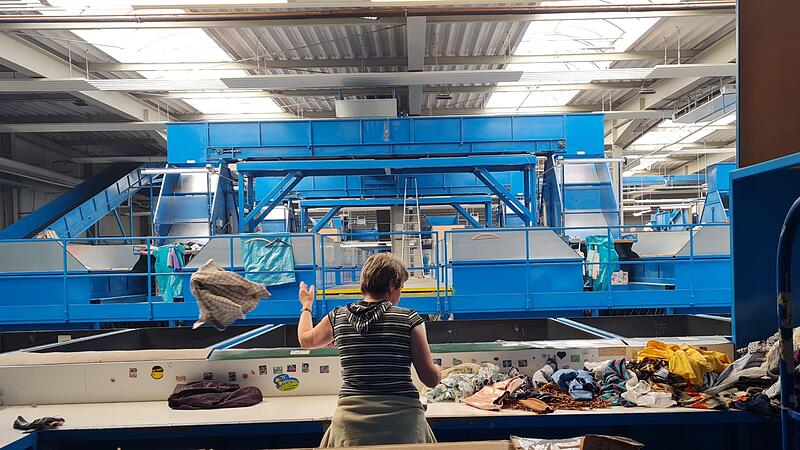Image: Christian Huber
Every Upper Austrian clears out five kilograms of old textiles – from trousers to clothes and shoes to old curtains – every year. Much more textile waste is generated throughout Austria – almost 220,000 tons, with around three quarters being attributable to industry. Some household textiles end up in the residual waste bin and are therefore lost for reuse and recycling. “If we had a better separation, more than half of this residual waste could be recycled,” says Roland Wohlmuth, chairman of the Upper Austrian state waste association and mayor of the Innviertel municipality of Brunnenthal.
A large part of domestic textile waste is sorted and recycled abroad. For example in Apolda in the German state of Thuringia, where 2500 tons of old textiles are brought from Austria every year. The OÖN accompanied a delegation from the state and district waste associations there this week for an on-site inspection. Here, 350,000 pieces of clothing are sorted by hand by 250 employees every day. According to “Texaid”, a little more than half of the clothing can be sold as second-hand goods. A role model also for Upper Austria, as Wohlmuth says – especially in view of the fact that the European Union will oblige its member states to separate textile collection from 2025.
Thomas Anders, Managing Director of the Upper Austrian Waste Management Association, sees an opportunity for Upper Austria in the “Texaid” example: “Our location would be suitable for a similar facility in which textiles from all over Austria are sorted. So far, our textiles have been sorted in Germany or Bulgaria These transport routes could be saved and the added value kept in one’s own country.” In any case, the global textile industry is responsible for ten percent of global CO2 emissions.
clothes for cheap money
A first step on the way to reduction is to expand the collection of textiles in the 179 waste material collection centers (ASZ) in Upper Austria. Because wet or dirty clothing or carpets are not accepted at the moment. “With additional containers, however, a higher collection rate could be achieved,” says Wohlmuth.
And this is urgently needed. “Fast fashion” – clothing for cheap money – is becoming more and more fashionable. Clothing consumption in Europe will increase from 16 to 20 kilograms per capita in the next few years, says “Texaid” managing director Thomas Böschen. According to Böschen, in order to be able to process these quantities, two and a half times as much sorting capacity as before is required. The Provincial Waste Association sees potential here in Upper Austria – because cleaning rags for industry or other recycling products can be made from textiles that are no longer wearable.
ASZ in competition
This would also be a new branch that was sought anyway, because the “successful project” waste material collection center (ASZ) is under pressure: private-sector providers are pushing into the market, “but the pie isn’t getting any bigger,” says Wohlmuth. He would also like to strengthen the second-hand range of the waste association. He also sees room for improvement when it comes to the willingness to buy second-hand products: “Reusing used is a sustainable attitude to life and not an indictment of poverty.”
With better separation and more sustainable shopping behavior, the major goal of a circular economy – complete recycling and thus the avoidance of waste – should be achieved.
Source: Nachrichten




